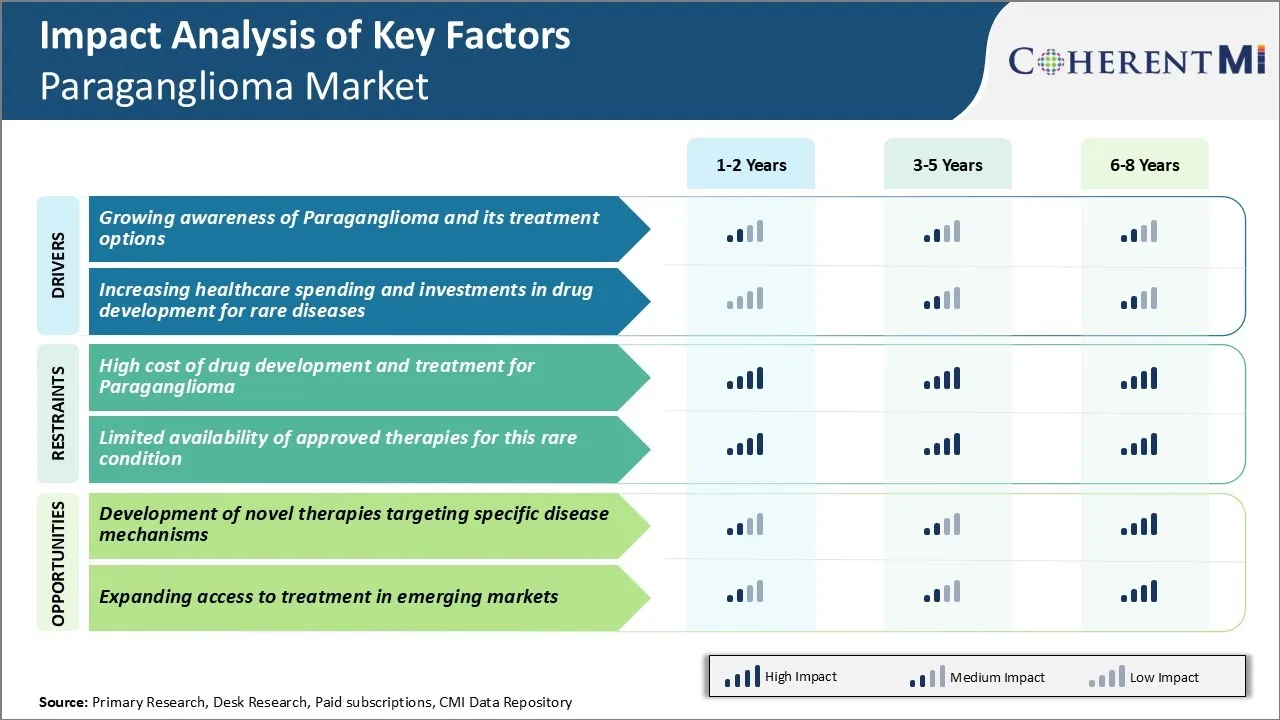Paraganglioma Market Trends
Market Driver - Growing Awareness of Paraganglioma and its Treatment Options
As more light is being shed on rare medical conditions, patients are becoming increasingly aware of even the most uncommon of diseases. Although still an unfamiliar term to most, advocacy efforts by patient communities and specialized cancer institutes have helped spread the word about Paraganglioma.
Medical publications as well as mainstream media now carry regular features bringing Paraganglioma to wider public notice. Stories of struggles, triumphs and ongoing Battles against the rare disease have struck an emotional chord with audiences. Doctors too play an active role, conducting public sessions and engaging in media interviews to disseminate clinical information and diagnosis procedures for Paraganglioma.
As awareness deepens, we also see a growing number of patients undergoing necessary medical examinations at an early stage. Catching the rare tumor in its initial phases significantly improves chances of successful outcomes with minimal financial and personal costs. Early detection followed by prompt intervention has emerged as a key priority area. With continued advocacy efforts, growing awareness is expected to positively influence timely diagnosis and boost growth of the Paraganglioma market.
Market Driver - Increasing Healthcare Spending and Investments in Drug Development for Rare Diseases
Rare diseases, though low in prevalence individually, collectively affect a significant patient population worldwide. For Paraganglioma, treatment approaches have mostly relied on managing symptoms rather than curing the underlying condition due to lack of focused research efforts in the past. However, the past decade has seen encouraging changes.
Led by governments, organizations as well as private benefactors, funding for rare disease drug development is being ramped up substantially. Major economies have rolled out national plans allocating multi-million-dollar budgets towards boosting rare disease drug discovery. Several new grants and initiatives provide funding and incentives for private industry to pursue promising orphan drug candidates.
The cumulative support is feeding greater investor confidence in the rare disease sector. More biotech companies are pivoting resources towards orphan drugs while large pharma firms are on the lookout for takeover and collaboration opportunities. A few Paraganglioma therapies have already witnessed successful approvals recently riding on such investments. With enhanced R&D budgets and wider coverage provisions, the influx of novel treatment solutions in the Paraganglioma market is poised to grow.

Market Challenge - High Cost of Drug Development and Treatment for Paraganglioma
One of the major challenges faced in the Paraganglioma market is the high cost associated with drug development and treatment of this rare disease. Paraganglioma is a rare type of neuroendocrine tumor which occurs in less than 1 in 100,000 people annually.
Due to the low prevalence of this disease, pharmaceutical companies are less inclined to invest significantly in research and development of new therapeutic drugs. Developing an entirely new drug typically costs over $2.6 billion and takes over 10 years of intense research, testing and clinical trials.
Only a few pharmaceutical giants have the financial capabilities and risk appetite to undertake such expensive R&D endeavors for an orphan condition like Paraganglioma. Moreover, approved therapies like peptide receptor radionuclide therapy also involve high costs making it unaffordable for many patients.
The rare nature of this disease combined with high costs of developing effective therapies pose formidable economic challenges to all stakeholders in Paraganglioma market including pharmaceutical companies, healthcare providers and patients.
Market Opportunity - Development of Novel Therapies Targeting Specific Disease Mechanisms
One of the key opportunities in the Paraganglioma market lies in the development of novel therapies targeting specific disease mechanisms and pathways. With advances in molecular biology and genomic research, scientists are gaining deeper insights into the genetic mutations and biological mechanisms underlying the development and progression of Paraganglioma tumors.
Developers are now exploring precision medicine approaches which focus on developing therapies acting on molecular targets linked to tumor growth and metastases. Successful discovery and validation of such specific drug targets can pave way for creation of highly effective and safer targeted therapies for Paraganglioma. This represents a major area of opportunity to address the unmet needs through innovative precision medicines.
Pharmaceutical companies investing in tailored R&D programs leveraging latest scientific knowledge hold potential to capture significant share in the Paraganglioma market.